
 (The shipowners from Carthage-at their own expenses). This text can be read on the mosaic floor of statio 18 on the large square behind the theater of Ostia where at the beginning of our era the traders and shipowners praised their trade. In this case the shipowners / skippers of ships from Carthage. But who were the so-called navicularii ?
(The shipowners from Carthage-at their own expenses). This text can be read on the mosaic floor of statio 18 on the large square behind the theater of Ostia where at the beginning of our era the traders and shipowners praised their trade. In this case the shipowners / skippers of ships from Carthage. But who were the so-called navicularii ?
Brief version of "The Roman navicularii: an investigation into the social, economic and legal position of shipowners in the Imperial period" by Wim Broekaert (2006)
In general, we have to translate the term navicularius (singular of navicularii) to "shipowner" although this term was, as we will see, much more comprehensive. The claim of Isidorus of Seville and others that navicularii were shipbuilders should not be given much value1. His statement in the sixth century AD. “….navicularius quia tantum est fabricator et artifex.” (…. <they call him> navicularius because he only builds and manufactures ships.) probably comes from a law from late antiquity in which it was decided that a new navicularius, who started to work for the State, had to deliver his own ships and that the inhabitants from the province where the shipowner lived, had to deliver the timber for the construction.
The navicularii were active in overseas trade and transport. However, there is a much more complex reality behind this general claim.
In this article we limit ourselves to the Roman navicularii at the time of the empire in the western part of the Mediterranean Sea, that is to say that part of the empire that spoke Latin.
The sources for Roman shipowners are very scarce over the period of the Republic.
This situation changes from the first century AD, when both epigraphic and literary testimonies inform us about the navicularii. The navicularia will undergo major changes in the 3rd and 4th century AD., but shall continue to exist until the 6th century.

Navicularius and some related terms
The origin of the word navicularius is in itself a point of discussion. The word apparently can be traced to navicula (small boat) with the addition of the suffix -arius, which would mean so much as "the navigator of a small vessel". The etymological dictionary of Emout and Meillet, however, denies that both words must be connected2. According to this dictionary, navicularius is a latinized form of the Greek word  which, incidentally, means roughly the same. This last statement is perhaps more plausible. If only because the owner of a small vessel is difficult to associate with, for example, the large grain ships of 10,000 tons.
which, incidentally, means roughly the same. This last statement is perhaps more plausible. If only because the owner of a small vessel is difficult to associate with, for example, the large grain ships of 10,000 tons.
The navicularius did not necessarily have to be the owner of the boat. He was the exploiter. If he owned the ship too, he was in the same time the dominus navis (lord of the ship). The navicularius could act as a superviser and work in the company; he could also hire people for this and stay behind the scenes.
There were also several options for exploiting a ship: he could use the cargo space for his own trade and / or take passengers with him. He could also make the loading space available to other traders.
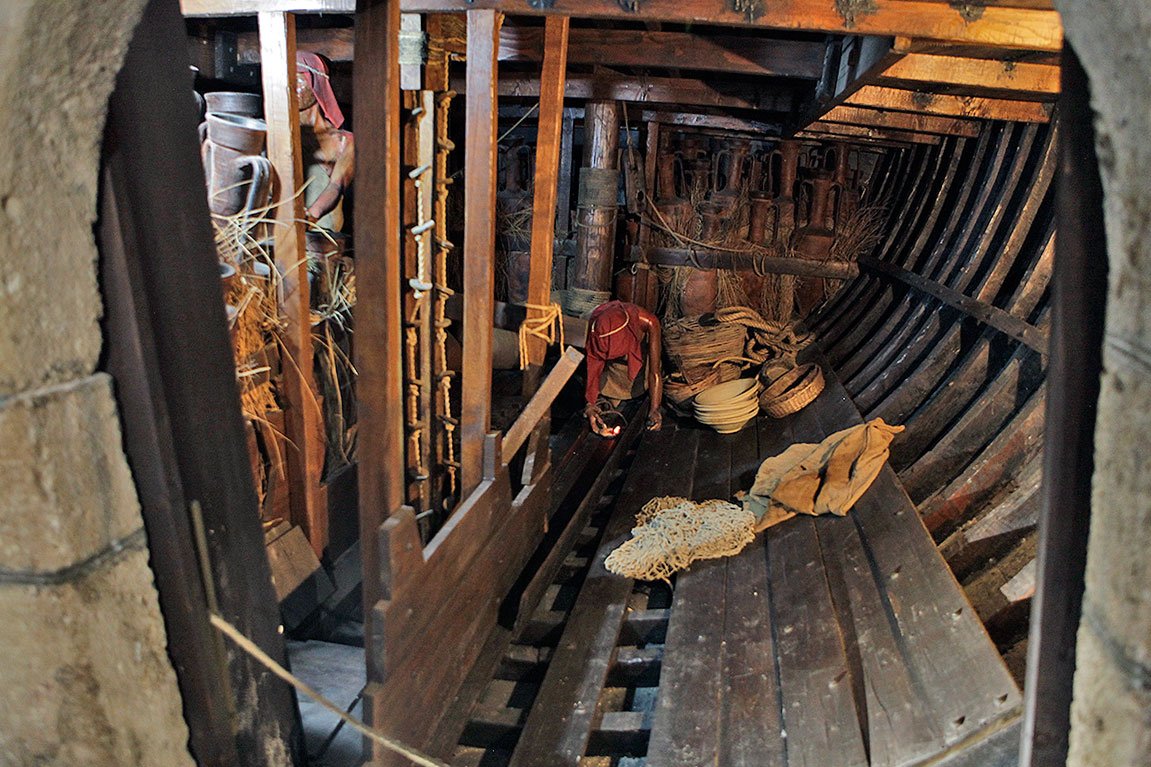
The following commentary from the Roman orator, politician, lawyer and philosopher Marcus Tullius Cicero gives a somewhat more precise view on the concept of navicularius:
“Navicularii dicuntur, qui transferunt frumenta in urbem aut ubicumque est imperator” ("Whoever transports grain to Rome or wherever the emperor is, is called navicularius.") 3
The navicularii (shipowners) were also often associated with a negotiator (trader). In many cases they were both.
The operation of a ship was an expensive affair. Experienced shipmen and sailors had to be hired. These costs could still be somewhat reduced by the use of slaves and freedmen who belonged to the family. Money was also needed to start a business and to maintain the ship. As a rule, shipowners were among the more wealthy people.
If the navicularius did not join the voyage, he appointed a representative, the magister navis. If he was on board himself, he was also the magister navis.
The profession of navicularius was not highly regarded and was apparently unworthy for a prominent Roman. This was not only the case for the navicularii, but according to Cicero for everyone who lives in the vicinity of a harbour and regularly came in touch with sailors: “Now cities near the sea also have a certain depravity and changing of values. After all, they get used to new languages and customs and not only merchandise but also customs are imported from abroad, so that none of the traditional institutions can remain pure. And furthermore, the people who live in those cities do not stay at home, but a rapidly changing hope and opinion take them far from home. Even when they stay with their bodies on the spot, their thoughts reside elsewhere and roam around constantly. In the past, nothing has contributed so strongly to the downfall of Carthage and Corinth, (cities) that have long since fallen, than that error and scattering of their citizens, because of the desire to trade and to sail they no longer paid attention to working on the land and practicing the martial arts." 4
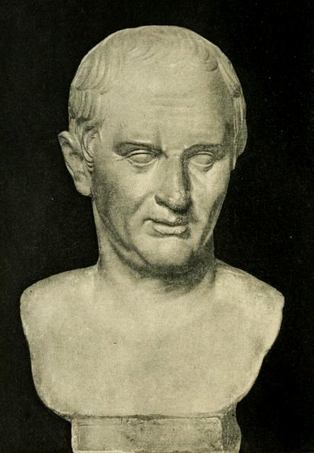
Aristocrats such as Cicero, for which ownership of land was the highest good, highly disapproved of trading activities and related efforts.
From the end of the first century AD., the navicularius could, besides being an independent shipowner, also be the designation of a shipowner who works within the framework of a corpus and acts as a trading partner of the government as part of the annona, the distribution of grain among the population (see "Eating from the African bowl").The navicularius acquires again a different meaning in late antiquity. He then is no longer just the person in charge of transport for the government, but also the person who helps to finance this transport with his assets.
From the second century BC. there will also be another name for the navicularius, the exercitor. The Roman lawyer Ulpianus says the following about this: “Exercitor ('shipowner') we now call the person to whom all income and profits accrue, whether he is the owner of the ship or hires the ship from the owner as a whole, either for a fixed time or forever." 5
In addition to the term exercitor, concepts such as nauta, nauticus, nauclerus and navarchus with the meaning of navicularius were also used. All these names were navicularii who undertook overseas transports. In exceptional cases it could also be inland skippers, but usually an addition such as amnicus (concerning the river), lyntrarius (ferryman) or codicarius (riverboat) made it clear that we are dealing with a skipper who only sails on the rivers.
Dominus navis
We spoke earlier about the owner of a ship, the Dominus navis. As owner he can operate his ship himself and is in that case also navicularius, magister navis, gubernator and / or negotiator.6
He can also have the ship operated by somebody else or rent it out. We can assume that the majority of the navicularii owned the ships they operated: from a commercial point of view it is logical that he himself had the means with which he practiced his profession.
If the dominus navis had a contract with the state to transport goods to Rome, it brought him several benefits. Under Claudius, a social promotion was promised and Nero gave them a tax reduction7.
Around the middle of the 2nd century AD. the domini navium enjoyed an exemption from the munera publica (public donations):
“Those who have built sea-going vessels with a capacity of not less than 50.000 modii, or five or more ships with a capacity of not less than 10.000 modii each, and which are deployed to supply the Roman people are granted, on behalf of their ship, with an exemption from public obligations, as long as these ships are sailing or others in their place. However, senators cannot benefit from this exemption because they are not permitted to have a ship under the lex Iulia repetundarum". 8 With this exemption they received the same privileges as the navicularii (shipowners) and negotiatores (traders) who worked for the annona (grain transport for the State). For this the domini navium had also to fix up a contract with the State. In Ostia the following inscription (CIL, 4142) was found from around 171 AD:

After the 2nd century we hear nothing of the domini navium anymore. Perhaps they were absorbed in the corpora naviculariorum (guild of shipowners) because the owners mostly operated the ships themselves and there was no longer a distinction between a navicularius and the dominus navis. This naturally made communication between the shipping company and the State easier.
Magister Navis
There is little uncertainty about this function. The magister navis (captain) was appointed on board by the navicularius as deputy and chief responsible. In addition to the magister, another person could be appointed to steer the ship, the gubernator. He could also take the helm himself as in the famous wall painting of the Isis Giminiana from the 2nd / 3rd century AD. 9
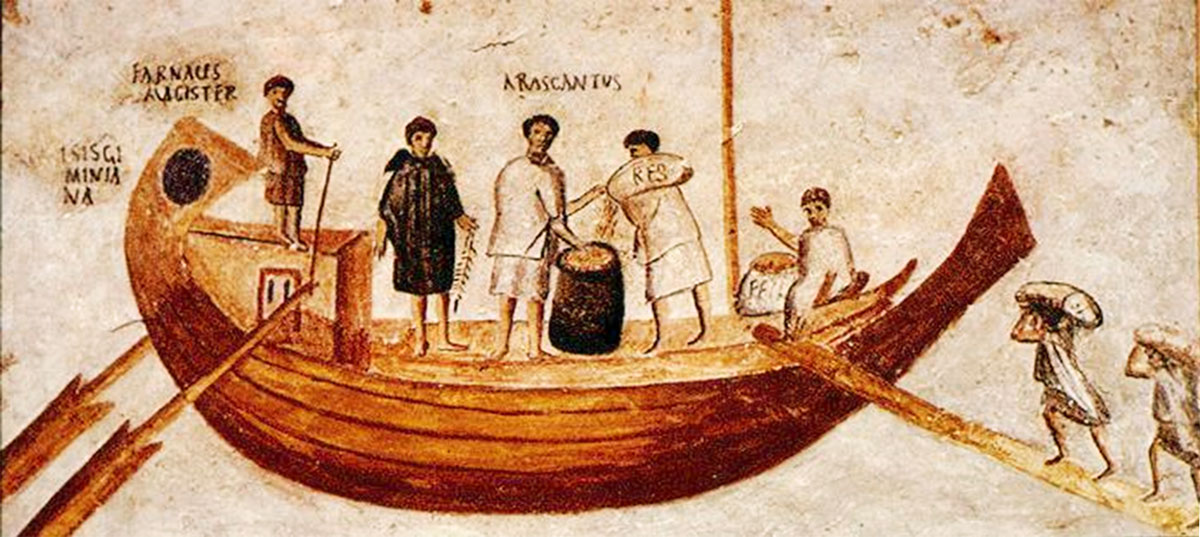
On large ships the magister did indeed leave the technical management and control to someone else. He than heads all other sailors, the nautae, and represents his principal:
"If someone now appoints a ship's captain, he allows contracts to be fixed with him." 10
It needs no explanation that this often encountered legal problems in practice. That is why, in addition to the normal contract whereby the ship and cargo space were rented, insurance was also taken out that guaranteed that in the event of a loss of cargo, this would be compensated.
Mercator and negotiator
During the republic, a distinction was made between these two terms. A mercator was originally a merchant or trader who traded goods on a large scale. This is in contrast to a caupo who only ran a small shop.
A mercator often had to travel to buy or sell his trade. A negotiator was a businessman specialized in banking and loans. At the beginning of the first century AD. the two concepts become synonymous.
The negotiatores also indicated in the name of their profession in which products they were trading, such as the negotiator frumentarius (grain trader). During the imperial period this changed and the mercator actually became the small local trader with little capital, while the negotiator ventured more into the large international overseas trading activities.
Utric(u)larius

This text is found on a marble tombstone in Gallia Narbonensis. Herein the terms navicularii and utric(u)lariorum are mentioned in one breath. The precise function of utric(u)larius is still uncertain. The word is probably derived from utricula (bag made from animal skin). That is why the utric(u)larius is generally seen as the producer of small leather bags used to transfer wine from South Gaul, supplied per barrel or amphora, for further transport. Incidentally, this is difficult to reconcile with representations of wine transport on reliefs, which mainly show ships and carts with barrels instead of bags.
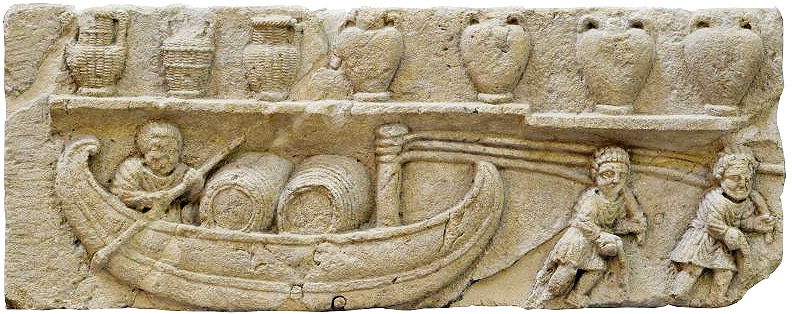
Some researchers see the utric(u)larius as an inland navigation skipper, others regard them as repairers of leather bags.
In 1981 existing theories were reviewed by P. Kneissl. It turned out that the places where utric(u)larii were mentioned all were located near major traffic routes and trade junctions often without a river nearby. Kneissl therefore concludes that the utric(u)larii were most likely responsible for the transport over land of products that were transported in leather bags, such as wine and, to a lesser extent, oil. 12
The navicularii in the western part of the Roman Empire
The Roman State did not own any trading ships or fleet. The transport therefore had to be out-sourced. This happened during the republic through contracts to so-called mancipes or publicani:
"We fix public contracts by auction, so that people bring us grain from the overseas provinces and we become not hungry." 13
If a publicanus did have a contract for the import of grain, but no ships available, he appealed to navicularii. Although we find only from the first century AD. indications in the sources that the navicularii took over the transport of products for the state, it is quite possible that they were already active in this sector in the Republic via publicani. From the Imperial period onwards, it is the navicularii that, partly due to the excessive abuses of the publicani14, take over transport on behalf of the State. One of the first mentions about navicularii is an inscription from Ostia (AE 1955.178)

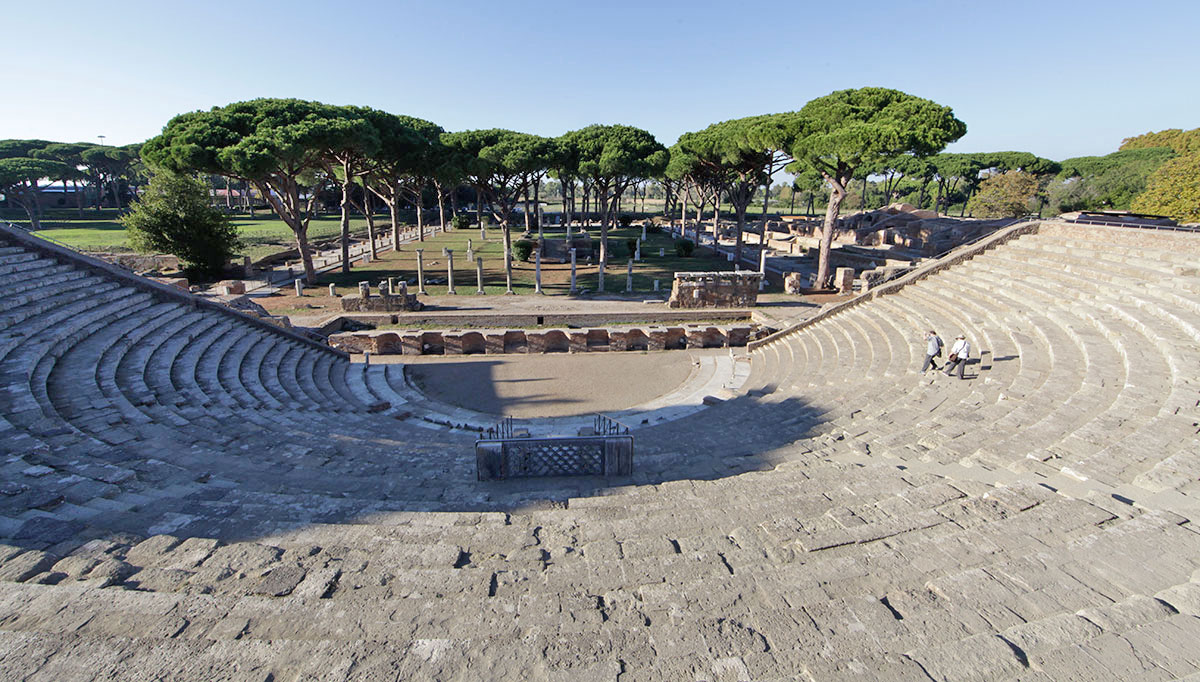
According to Palma and De Salvo, these navicularii were not actually shipowners of seagoing vessels, but owners of coasters from the Ostia area.16
From the end of the first and the beginning of the second century AD. the navicularii transporting goods for the annona are organized at provincial level as we can see on the Piazzale delle corporazioni in Ostia, where the African and Gallic shipowners of one specific city have their own statio in the 3rd century (see article 'Overseas trade'). The transport was left to the navicularii, but they operated from Italy itself, from Ostia. They would probably have sailed on several transport routes with always the port of Ostia as their ultimate destination.
When the importance of the annona increased, it was probably economically more interesting to organize the transport from the places of export.
Which products were involved in the food supply of the State?
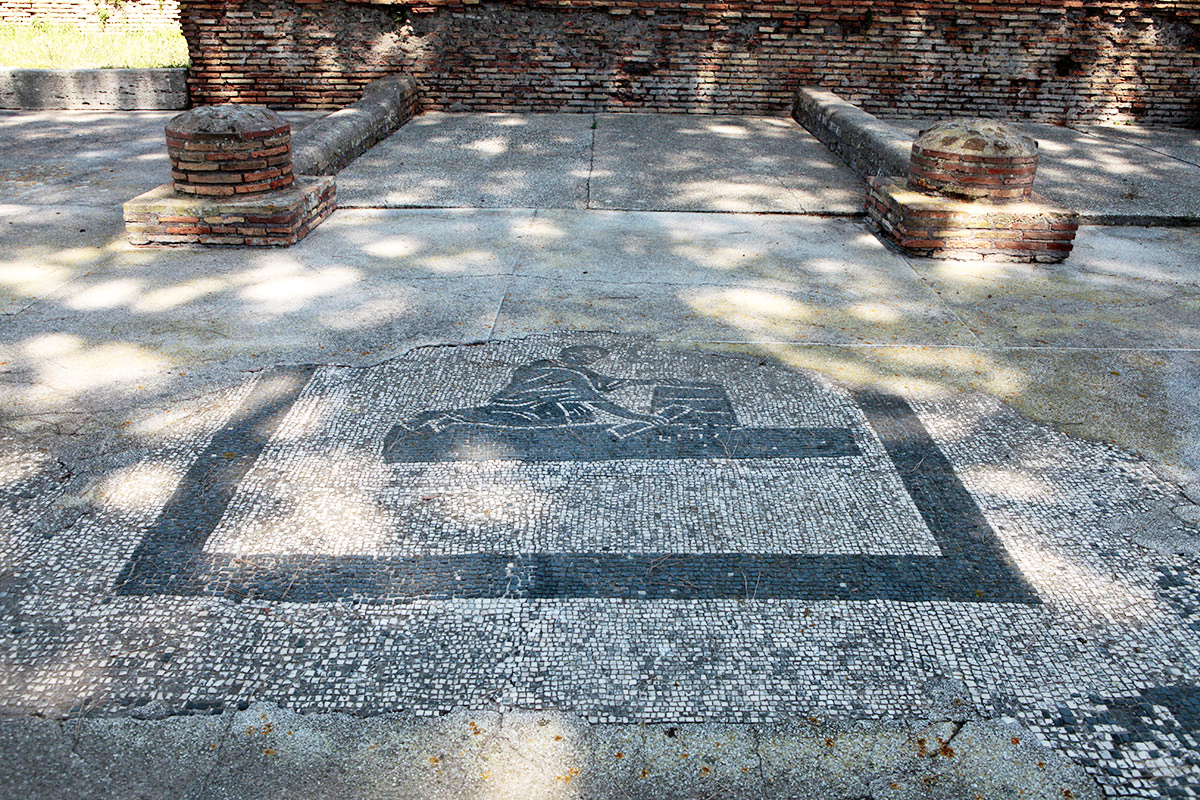
To begin with, there was grain of course. In the first centuries of the Empire, that grain came mainly from Egypt and Africa and, to a lesser extent, from Italy, Sicily, Sardinia, Gaul and Spain. From various sources it can be deduced that Rome had around 60,000,000 modii (400,000 tonnes) of grain imported every year17.
In addition, oil was also important. Oil for cooking, for lighting and skin care. Already in the first century BC. Beatica (Spain) played a major role in supplying Rome. This continued during the Imperial Age: the countless shards of oil amphoras from Monte Testaccio (Rome), the youngest shards date from the middle of the 3rd century, provide impressive evidence for this.

From the early Imperial period, Italy was largely dependent on African oil (read article 'Farm the desert to illuminate Rome').
The distribution of oil was only part of the annona from the time of Septimius Severus. Because the import of oil only came late under the authority of the State, in the first three centuries trade of oil was in the hands of private individuals. The transport was mainly provided by shippers from Narbo18 .
A third product was meat. This was only part of the annona from the reign of Aurelian. The care of this product was done by a special class of professional, the suarii. The navicularii were not involved in this trade.
Already during the republic, Puteoli was, because of its favorable location in the Bay of Naples, the main landing point of Italy (see 'The ports of Campi Flegrei'). From there, the products were transported by land to Rome or transferred to smaller ships that sailed to Ostia along the coast. Until the end of the 2nd century AD. the grain transports from Egypt had Puteoli as their final destination. After the construction of the new ports under Claudius and Trajanus, that final destination became Portus. This of course meant a huge catastophe to trade around Puteoli.
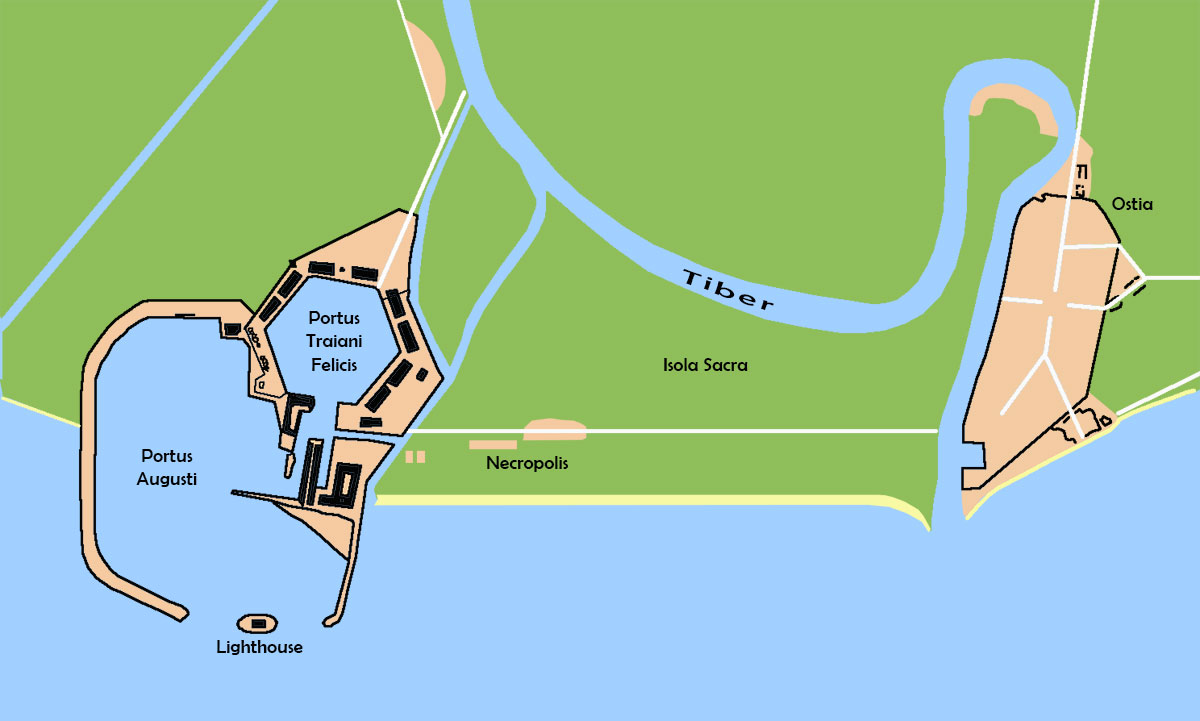
When a shipowner received an order from the state, he had to sign a contract according to the principle of locatio-conductio, whereby the shipowner as a locator (letter) made his ship available for a certain service to the conductor (tenant), in this case the State, represented by a praefectus annonae. He received compensation for this only after fulfilling his assignment. So, all the risk lay with the navicularius. This compensation consisted of certain privileges and a freight wage.
From the second century onwards, a number of laws are known that more accurately determine and protect the legal position of the navicularii.
The first testimony we have of such a contract with the State dates from the Claudius period. In the winter of 51, Rome suffered from a grave lack of grain. The crowds, in anger, pelted the emperor with pieces of bread. Claudius immediately took the necessary measures20:
“(…) he left no possibility unturned to have food supplied in the winter too. After all, he also promised traders certain profits by taking on the damage if someone had suffered damage due to storms, and he granted those who built ships for trade great benefits according to their status: a Roman citizen was exempted from the lex Papia Poppaea21, a Latin citizen received Roman civil rights and women the ius quattuor liberorum 22.”
Claudius tried to stimulate food transport during the winter months (read "Winter shipping"). He did not, however, mentioned which damage the State should compensate. Did the ship also belong to this or was it only the cargo?
Claudius also offered the prospect of benefits for those having built new ships with a minimal content23:
"Also under an edict by Claudius, Latin civilians get Roman civil rights if they build a seagoing vessel that can hold no less than 10,000 modii grain and that ship, or one that has been replaced, transports grain to Rome for six years."
In the 2nd century the minimum tonnage was increased to 50,000 modes (435 tons). This did not have to be a single ship with a tonnage of 50,000 modes, but could also be a number of ships with a total capacity of 50,000 modes.
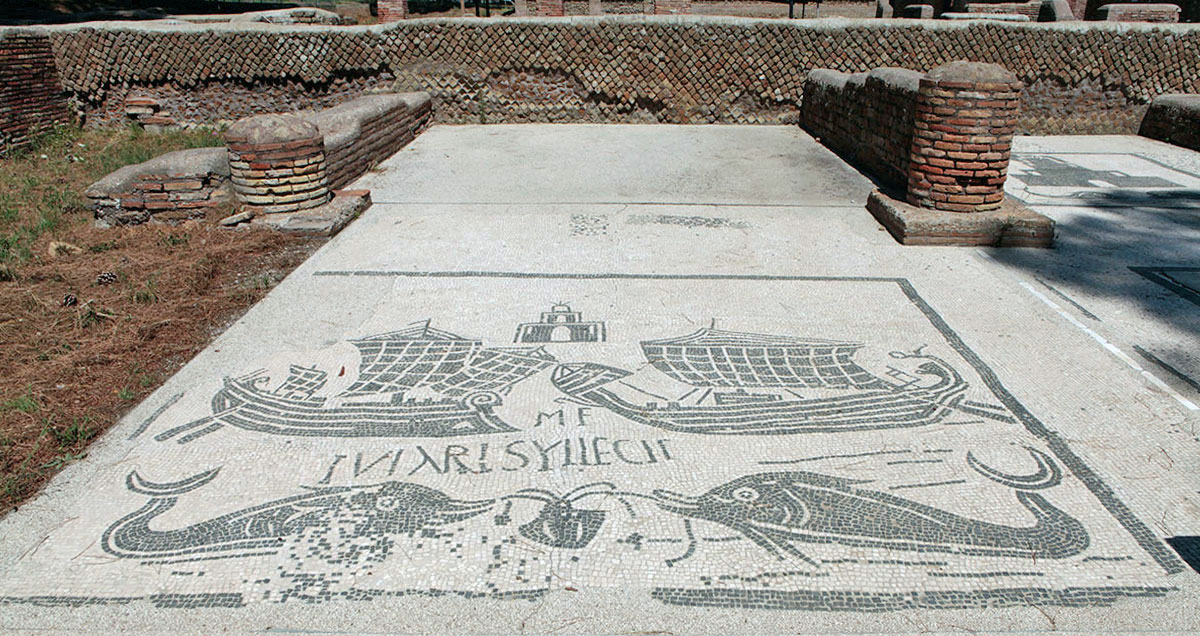
The exemption from munera publica (public obligations) was, according to the following regulation, not only for importers working for the State but also for trade and transport financiers for the government 24:
“Shipowners and traders in olive oil having invested a large part of their private capital in this business are exempt from public obligations for five years."
These privileges only applied to the traders and shipowners themselves. Not for their family or heirs, nor for the nautae, the other people on a ship that sailed for the annona.
De corpora naviculariorum
In the first two centuries of the Empire, navicularii, as individuals, had the opportunity to enter the service of the annona, as a transporter, or as an investor with at least half his fortune. Probably from Trajanus they are united in corpora. Although it is not entirely certain, it is assumed that it began spontaneously as associations of shipowners, proofed by the state and gradually entering into an increasingly dependent relationship with the government. This process must have taken place in various areas of interest to the Roman economy and the annona. The shipowners of Narbo were a big exception. They did not join together in a corpus but in familiae (shipowners within their own clan). Being a member of a corpus did not mean automatically that you provided from the benefits which navicularii with a contract of the State had. Nevertheless the membership was sometimes wrongly misused for obtaining those privileges.
The corpora were organized according to the model of the local administration with its own management, administration, pay-office, etc. 25
It was headed by one or more magistrates with titles such as magister, quinquennalis or magister quinquennalis. These were assisted by lower "officials" for, for example, the finances (questores and curators) and clerks (scribae). Incidentally, only a handful of officials are wellknown and almost all of them were members of the corpus naviculariorum maris Hadriatici, (association of shipowners working on the Adriatic Sea) that was probably housed in Ostia26.
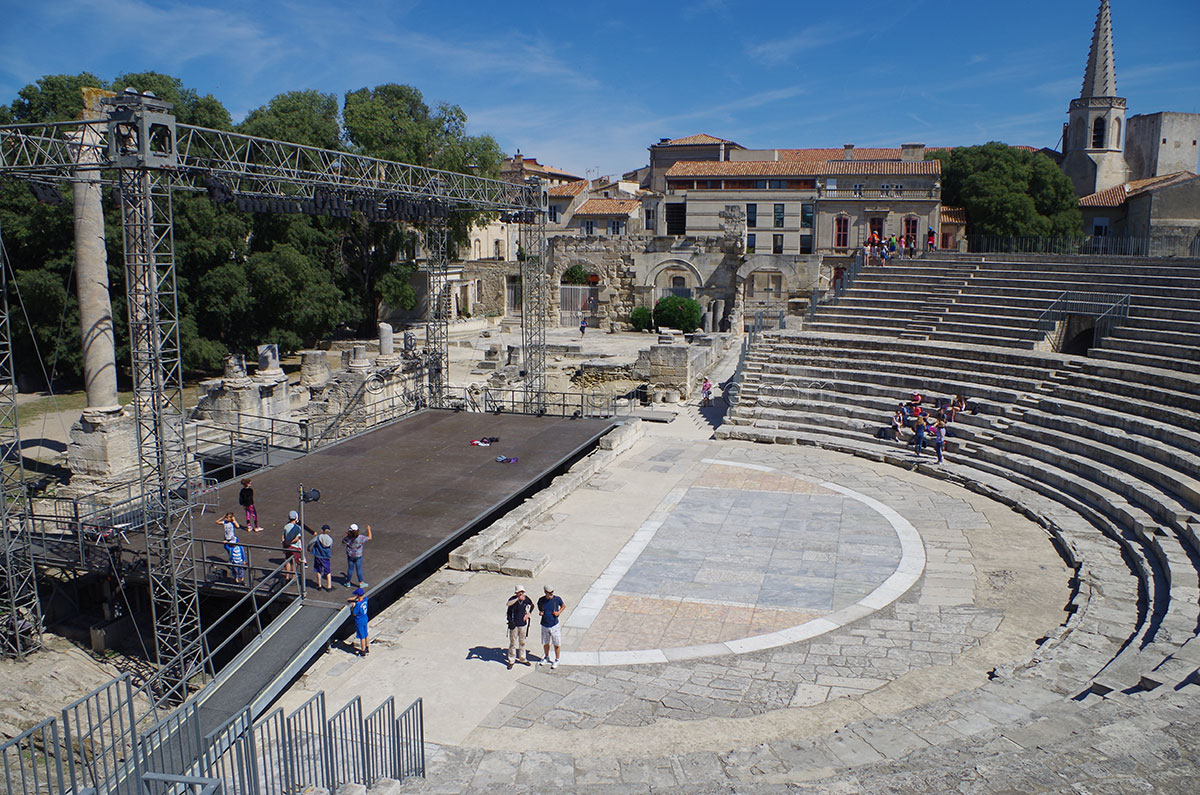
In addition to this corpus, in the 2nd century we only find the corpus naviculariorum marinorum Arlatensium from Arles. An inscription found in the theater of Arles shows how important the position of the shipowners was. They had good, reserved seats in that theater27.
In conclusion, we can say that the great importance of corpora for the government was that they could permanently dispose of a body that took care of the transport of goods for the State and offered the guarantee that contracts would not be broken by individual problems. The State no longer dealt with individual shipowners but with the corpus as a whole. For members it was interesting because of the privileges they received, the mutual assistance in money and ships from other members and the prestige of the corpus itself.
In addition, there remained enough cargo for individual shipowners as we see on the Piazzale delle corporazioni. The shipowners carrying grain had a contract with the State, but this only concerned grain and later oil for distribution to the people. Of course, much more grain and oil was traded and transported. The same applied to many other products. These navicularii or negotiones were certainly not required during the first three centuries of our era to become a member of a corpus. In the 4th century this membership became mandatory for all shipowners.
-
 Figure13: Sarcophagus inscription of a Magister Quinquennalis. In this case of acollegium of
Figure13: Sarcophagus inscription of a Magister Quinquennalis. In this case of acollegium of
shipbuilders from Ostia 28
Source - - Wim Broekhaert-The Roman navicularii: an investigation into the social, economic and legal position of shipowners in the Imperial period, 2006
Notes- 1:Isidorus of Sevilla (560 – 636) Etymologiae, 19, 19, 1
- 2: Ernout & Meillet, 1960, 431: “Sans rapport avec navicula”.
- 3: Cicero - Scholia Gronoviana, Pro Lege Manilia
- 4:Cicero, De Re Publica, 2, 7. Cf.also Juvenalis, Satyrae, 14, 258-304 ; Plinius, Naturalis Historia, 2, 118 “Est autem maritimis urbibus etiam quaedam corruptela ac mutatio morum; admiscentur enim novis sermonibus ac disciplinis, et inportantur non merces solum adventiciae sed etiam mores, ut nihil possit in patriis institutis manere integrum. iam qui incolunt eas urbes, non haerent in suis sedibus, sed volucri semper spe et cogitatione rapiuntur a domo longius, atque etiam cum manent corpore, animo tamen exulant et vagantur. nec vero ulla res magis labefactatam diu et Carthaginem et Corinthum pervertit aliquando, quam hic error ac dissipatio civium, quod mercandi cupiditate et navigandi et agrorum et armorum cultum reliquerant.”
- 5: Domitius Ulpianus (circa 170 — 223) was a famous Roman laywer from Tyrus. “Exercitorem autem eum dicimus, ad quem obuentiones et reditus omnes perueniunt, siue is dominus nauis sit siue a domino nauem per auersionem conduxit uel ad tempus uel in perpetuum.”
- 6: Cf. Cicero, The inventione 2, 154: “(…) dominus navis, cum idem gubernator esset (…)” (“if a shipowner is the navigator at the same time”). This would be the case mostly at small vessels.
- 7: Sirks, 1984, 133-137 and 141-144; Herz, 1988, 102-103.
- 8: Dig. 50, 5, 3 (Scaevola): “His, qui naues marinas fabricauerunt et ad annonam populi Romani praebuerunt non minores quinquaginta milium modiorum aut plures singulas non minores decem milium modiorum, donec hae naues nauigant aut aliae in earum locum, muneris publici uacatio praestatur ob nauem. senatores autem hanc uacationem habere non possunt, quod nec habere illis nauem ex lege Iulia repetundarum licet.”
- 9:Photo Vatican Archive.
- 10: Dig. 14, 1, 1, 2 (Ulpianus). “si quidem qui magistrum praeponit, contrahi cum eo permittit”
- 11: Reliëf-collection Musée Lapidaire
- 12: P. Kneissl 1981, 171-182
- 13: Columella 1, 20: “(…) ad hastam locamus, ut nobis ex transmarinis prouinciis aduehatur frumentum, ne fame laboremus (…)“
- 14:Tacitus, Annales, 13, 51
- 15: Found in the Schola del Traiano (not the original location). “To Pacceius, son of Lucius, quaestor with praetorian authority, the shipowners of Ostia, because he as the first a [sculptured picture?] ..."
H. Bloch – AE 1955.178. (The way of writing naviculariei looks archaic and places the inscription in the first century AD.) - 16: Palma.1975, 12; De Salvo, 1192, 376
- 17: Casson, 1980, 21. Cf also Rickman, 1980a, 263-264
- 18: Sirks, 1984, 87, noot 2
- 19:Suetonius, Claud., 18, 2.
- 20: Suetonius, Vlaud., 18, 2-19,1 “(…) nihil non ex[eo]cogitauit ad inuehendos etiam tempore hiberno commeatus. nam et negotiatoribus certa lucra proposuit suscepto in se damno, si cui quid per tempestates accidisset, et naues mercaturae causa fabricantibus magna commoda constituit pro condicione cuiusque: ciui[s] uacationem legis Papiae Poppaeae, Latino ius Quiritium, feminis ius IIII liberorum.”
- 21:Law that obliged to have children.
- 22: Privilege to be allowed to make a will without intervention that was normally given if one had three or more children.
- 23: Gaius, Institutiones, 1, 32c. - “Item edicto Claudii Latini ius Quiritium consecuntur, si nauem marinam aedificauerint, quae non minus quam decem milia modior(um frumen)ti capi(a)t, eaque nauis uel quae in eius locum substituta (sit, sex) annis frumentum Romam portauerit.”
- 24: Dig.50, 4, 5 (Scaevola) “Nauicularii et mercatores olearii, qui magnam partem patrimonii ei rei contulerunt, intra quinquennium muneris publici uacationem habent."
- 25:Dig. 3, 4, 1, 1 (Gaius). ZSee pag. 58 for the text. Cf. Royden, 1988, 14-17
- 26: Cf. infra, blz. 75.
- 27: CIL 12, 3318
- 28:D(is) M(anibus)
C(aius) IVNIVS PAL(atina) EVHODVS MAGISTER Q(uin)Q(uennalis)
COLLEGI FABR(um) TIGN(uariorum) OSTIS LVSTRI XXI
FECIT SIBI ET METILIAE ACTE SACERDO
TI M(agnae D(eum) M(atris) COLON(iae) OST(iensis) CO(n)IVG(i) SANCTISSIM(ae)
(Vaticaans museum)






 We are committed to providing versions of our articles and interviews in several languages, but our first language is English.
We are committed to providing versions of our articles and interviews in several languages, but our first language is English.